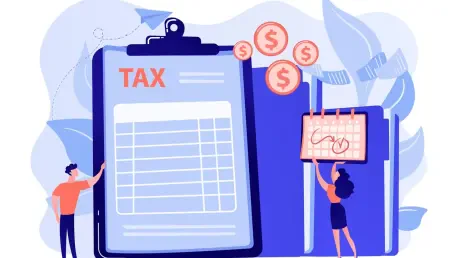In the realm of fiscal policy, the debate over whether tax reform can effectively replace enforcement to drive revenue growth holds significant importance. This conversation has captured public attention, especially in light of the Liberal Party’s recent proposals during their election campaign. The proposal suggested that the Canada Revenue Agency could capture substantial revenue streams through intensified tax penalty enforcement. However, amidst ambitious projections, experts pose the fundamental question: Is enhancing enforcement the most sustainable means of fostering revenue growth, or does the path lie in comprehensive tax reform? Understanding these dynamics involves dissecting the mechanics behind the revenue projections and evaluating potential reform strategies.
Liberal Party’s Revenue Proposal
The Liberal Party’s recent revenue proposal outlined a strategy to generate $3.75 billion through stricter enforcement of tax penalties by the Canada Revenue Agency (CRA). At the crux of this plan is the harnessing of advanced technological tools to improve the identification and penalization of tax evasion, theoretically improving revenue intake without increasing tax rates. Yet, while appealing at a glance, the proposal has its complexities. The core of the debate questions whether this approach is robust enough to tackle the issue at hand. Several experts suggest that a more detailed analysis of implementation mechanisms is needed to grasp its full landscape. The party’s approach anticipates immediate enhancements in the CRA’s operational capabilities, highlighting an accelerated timeline. However, it stops short of detailing how technology or specific strategies would suffice in meeting the projected fiscal gains.
Critics highlight that simply focusing on punitive enforcement fails to address the actual causes of tax evasion comprehensively. By setting an ambitious target without unveiling the underlying methodology, the proposal leaves room for doubt. The emphasis on penalty enforcement, rather than holistic tax reform, limits the exploration of broader structural changes. Without clarity on how the targeted $3.75 billion in revenue would be realized, skepticism remains regarding the feasibility of purely enforcement-centric strategies to secure such substantial sums from tax delinquencies. The current proposal, therefore, resides at a crossroad between ambition and realism, sparking broader discussion on sustainable revenue models.
Skepticism from Tax Experts
Tax experts across the spectrum voice skepticism about whether the Liberal Party’s revenue projections can truly materialize. Key concerns arise from the lack of comprehensive methodology detailing how these projections were derived, eliciting doubt among stakeholders. In particular, the absence of precise calculations and outlined strategies has left many questioning the feasibility and execution of such ambitious targets. Some specialists argue that the aggregate figure of $3.75 billion lacks foundational backing, as neither the mechanics of boosting revenue nor the methodology for optimizing tax enforcement have been explicitly defined.
Within this landscape, Fred O’Riordan, holding profound expertise in tax policy and former roles at the CRA, offers insights crucial to evaluating the Liberal proposal. He contends that the projected revenue targets likely stem from existing auditing practices focused on international transactions, transfer pricing, and large corporations. Specifically, these are domains where the CRA already maintains intensive scrutiny. The eventual fallibility of these projections is underscored by historical precedents, illustrating that despite potential gains in assessment and penalty revenues, government experiences often reveal discrepancies between assessments and actual collections. Thus, the risk remains that projected revenue gains might not be sustained when weighed against systemic factors and real-world applications.
Critiques from Tax Policy Authorities
Prominent tax policy authorities further critique the feasibility of the Liberal Party’s proposed strategy, suggesting that levers currently available for tax enforcement might not suffice in meeting revenue goals without deeper tax structural reforms. Fred O’Riordan, representing EY Canada and boasting extensive experience with the CRA, points out that the projected revenue could primarily rely on present aggressive auditing practices rather than novel approaches. These practices include intense monitoring of sectors like offshore compliance and international transactions among multinational corporations, which are already high scrutiny areas.
The prospect of generating substantial revenue solely through enhanced enforcement raises additional questions, as it seems reliant on strategies already set in motion by the CRA. O’Riordan argues that unless fresh, innovative legislative penalties or systemic reforms complement or replace current measures, revenue expected from penalties and enforcement alone may be unrealistic. This skepticism hints at the inherent challenges encouraging reliance solely on distinctive enforcement, hinting at the broader, more pressing need for a tax framework overhaul to enhance compliance. The conversation continues with contemplation of potentially reallocating resources for the CRA from merely auditing and penalty-focused approaches toward more balanced methods of managing disputes and enhancing taxpayer compliance through systemic reforms.
Tax System Complexity and High Rates
Analysts like Rick Robertson, from Western University’s Ivey Business School, urge for strategic rethinking amid concerns that high marginal tax rates inherently encourage tax avoidance. Recognizing Canada’s steep marginal tax rates prompts introspection into their unintended consequences, fostering environments prone to evasive maneuvers. Robertson’s perspective resonates with the argument that while enforcement enhances detection and penalty collection, systemic burdens motivate tax evasion in the first place. Among academics, this compels discussions on adequate and meaningful corrective measures beyond enforcement-centric methods.
The challenge lies in balancing revenue generation demands with creating an equitable, manageable tax landscape. Achieving this equilibrium may demand tax rate reassessments alongside reforms aimed at simplifying the complex tax maze. Such reforms could target broader tax-based incentives that effectively incentivize compliance without resorting to new penalties. By addressing rate complexities and subsequent avoidance behaviors, experts advocate a pathway less burdensome to taxpayers, thereby encouraging greater voluntary compliance while aligning tax structures with expected fiscal targets.
Comparison with Global Practices
The analysis expands by drawing parallels with international practices, starkly contrasting Canada’s enforcement-heavy strategies with a more streamlined approach observed in the United States. In the U.S., simplification efforts seek to reduce bureaucratic inefficiencies and improve tax compliance through accessible processes. This approach aligns tax collection practices with the intended aim of fostering voluntary compliance. By engaging in less punitive measures, the focus shifts toward offering more streamlined and logical paths for taxpayers to comply with regulations.
Canada’s heavily enforcement-centered methodology, while robust in its attempt to curb tax evasion, reveals the need for introspection regarding its sustainability and effectiveness. In transitioning toward reform-oriented strategies, potential benefits may arise from reevaluating complex structures and easing compliance barriers. Embedding global best practices into Canadian fiscal policy entails borrowing from successful systems and tailoring them to local contexts. Emphasizing reform over solely expanding enforcement mechanisms further underlines the need for nuanced adaptations to sustain revenue growth while encouraging enhanced tax compliance.
Calls for Tax System Overhaul
The ongoing debate in the sphere of fiscal policy centers on whether tax reform or enforcement is more effective in driving revenue growth—a topic that has garnered substantial attention. The Liberal Party’s recent election campaign highlighted this issue by proposing that the Canada Revenue Agency could gain significant revenue by intensifying tax penalty enforcement. This suggestion has sparked interest and criticism alike, pushing experts to inquire if strict enforcement is indeed the most viable route for sustainable revenue growth, or if comprehensive tax reform presents a better alternative. The conversation delves into the mechanisms underpinning revenue projections and scrutinizes potential reform strategies. It requires an understanding of the complexities involved in evaluating enforcement versus reform, weighing their respective merits and limitations. As this discourse unfolds, it challenges policymakers to consider which path promises not only immediate benefits but also long-term fiscal sustainability.









